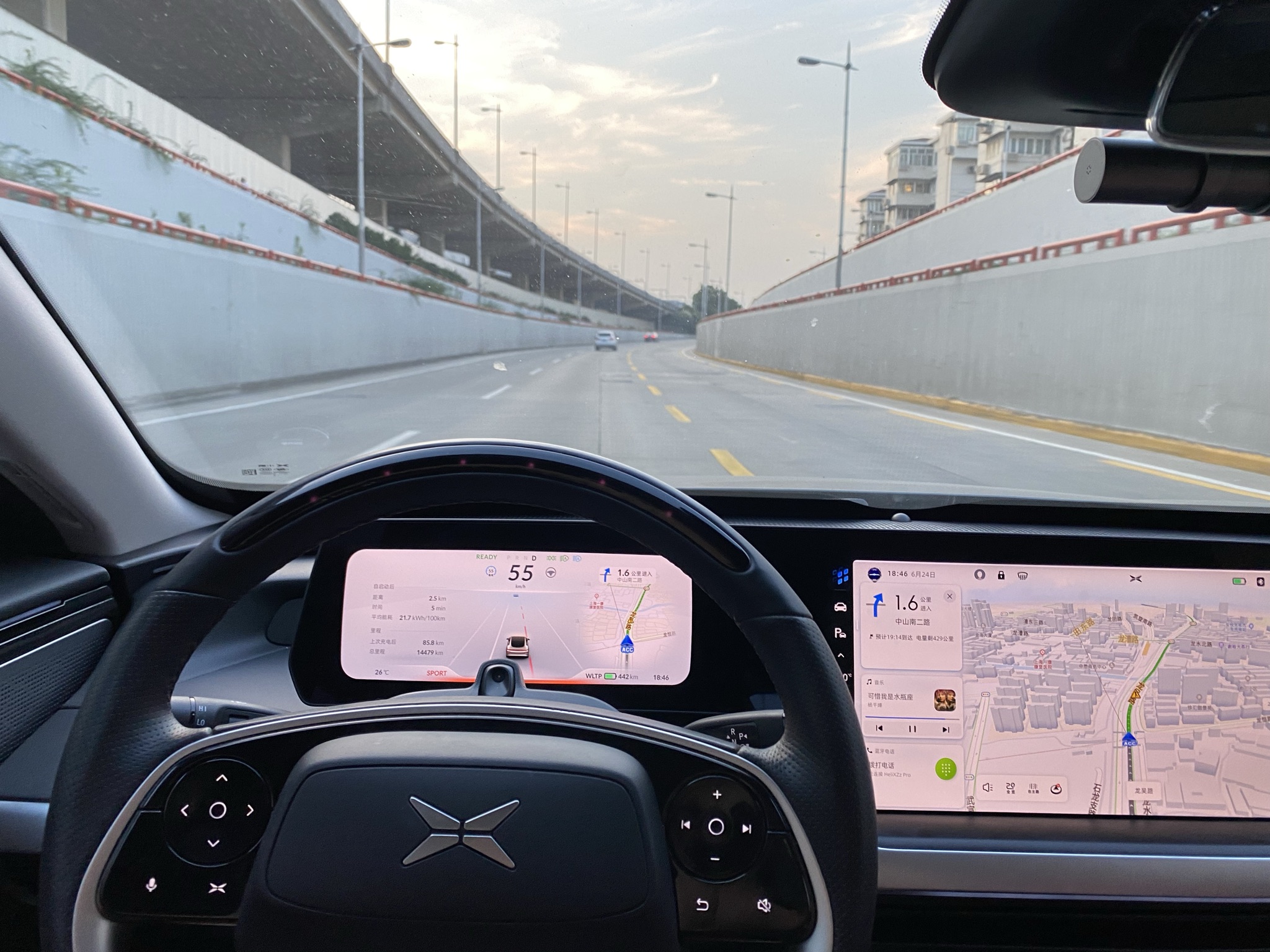A little over half a year ago, I had seen the physical models of the XPeng P7 and G3 at a showroom. At the time, I felt that their styles did not quite suit my preferences, so I did not pay too much attention.
Due to the impact of the pandemic, when I saw this P7 with Guangzhou license plates, the Dragon Boat Festival holiday had already ended. My original plan for a joyful deep experience of suburban and highway driving had turned into a drudging commuting experience of going to and from work while abiding by traffic restrictions and dealing with congestion.
First Impression: Agile Little P
Because it was a workday and I had to avoid restricted hours, I picked up the car at night. When I arrived at the parking lot, the doors unlocked automatically, and all electronic systems were already ready to go. After shifting to drive, I was able to drive off directly.
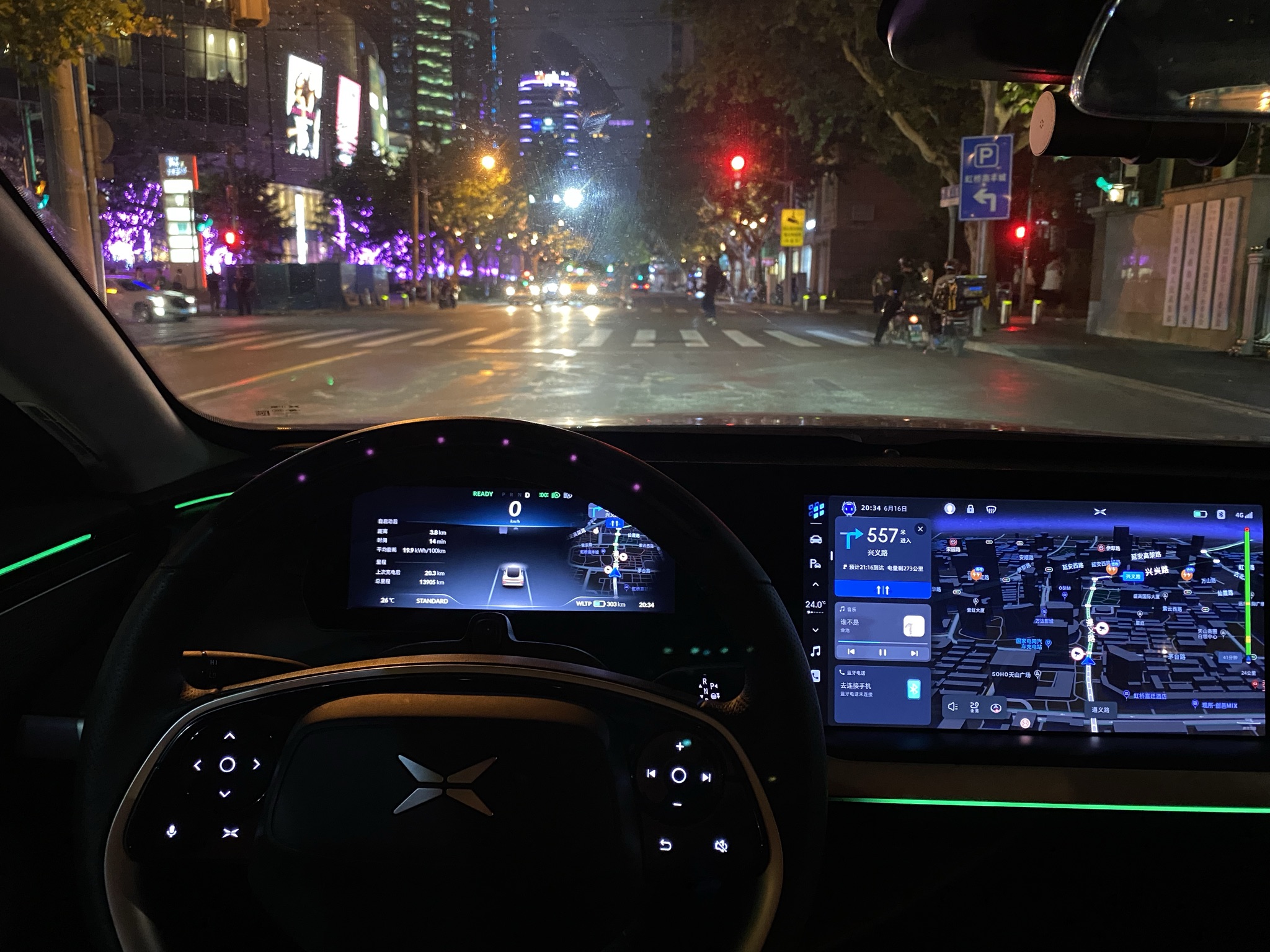
After getting familiar with the basic operations, I opened the navigation system and prepared to depart. When I said “Hello XPeng”, I was pleasantly surprised at how quickly the car responded. The car was able to continue conversing with me immediately without waiting for the robot to “think”.
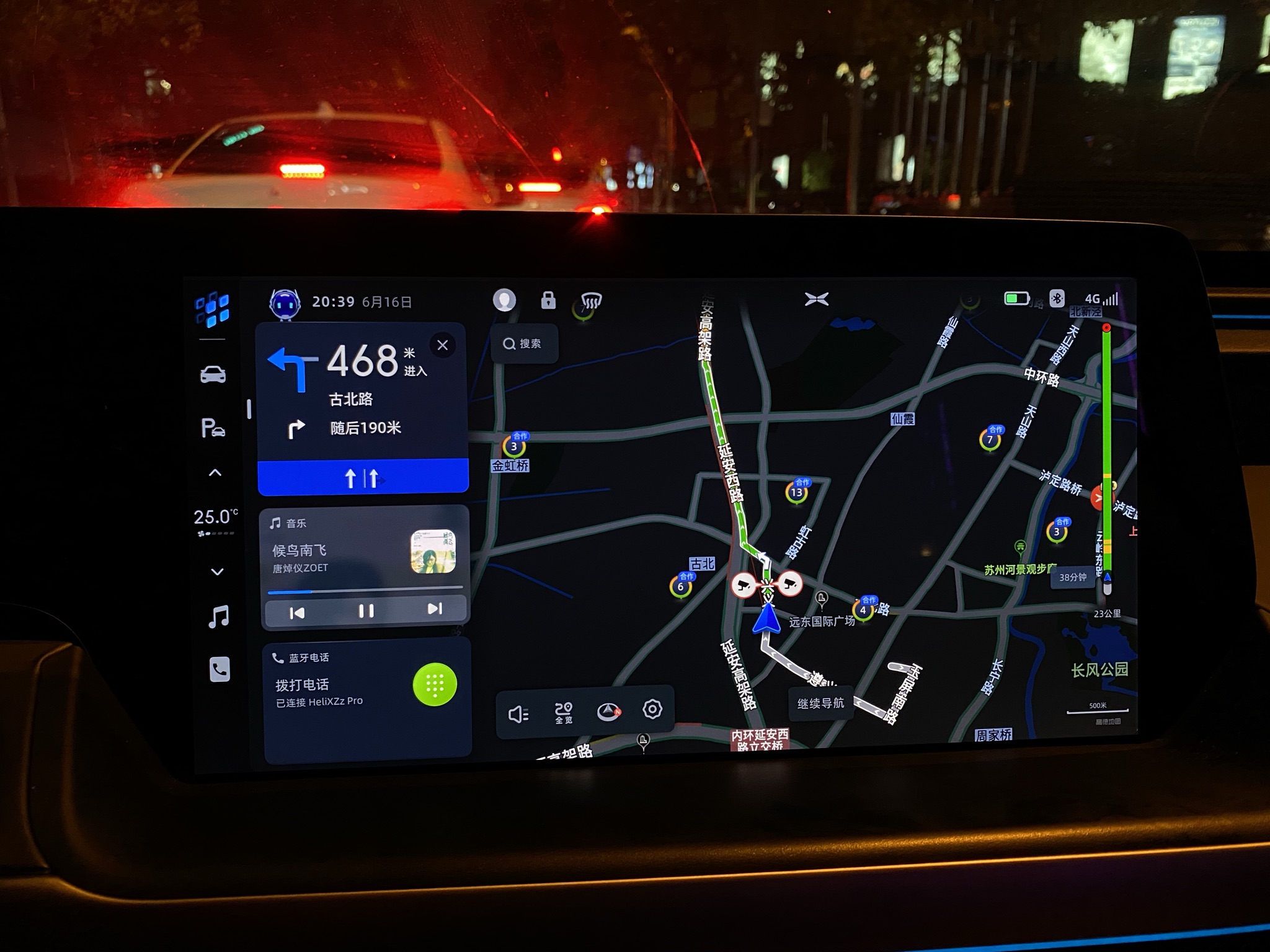
The car-mounted navigation system, based on Gaode Map, is the most user-friendly car navigation system that I have ever experienced. It is easy to zoom in and out, responds quickly, displays comprehensive information, and provides clear directions.

The UI of the instrument panel deserves a big thumbs-up. When following a car closely, the distance of the obstacles detected by the radar is immediately displayed on the left side of the instrument panel. This feature is precise, and also has the same quick response as the car-mounted navigation system. During the navigation process, the key points of the route will also be displayed on the right side of the instrument panel. In the middle of the display, it accurately shows the real-time position of other nearby cars, pedestrians that the car detects, and the car’s position in the lane. With just a glance, I can confirm the situation when driving through narrow lanes. Overall, the layout of the interface is reasonable, and the aesthetic design is spot on.
In the darkness, the interior of the P7 gives you a sense of envelopment. The ambient lights not only have adjustable colors, but also provide a visual effect in response to the music and rhythm of slow breathing.
Driving Experience: Simply Joyful
Starting from the moment I drove onto the elevated road on the first night, I knew that this was a car that I enjoyed driving, and it gave me the desire to drive more.
The P7 that I experienced was the rear-wheel drive long-range version. In the “standard” driving mode, the acceleration pedal control was relatively smooth, especially during the first part of the action which was moderated. As long as you don’t lift your foot suddenly from the accelerator pedal, the regenerative braking is not strong, but rather gradually reduces speed, making it easy to drive the car smoothly.Switching to “Sport” mode, the pedal response becomes noticeably more sensitive, but it still won’t “jump”, basically giving as much power as you give, which is very controllable, so it allows for precise control of power output when accelerating and overtaking, which is reflected in the driving experience as confidence.
The suspension performance belongs to the upper-middle level among the cars I have driven. Although it’s not exactly “go where you point”, the center of gravity is very low, and the suspension support is relatively strong, so it’s flexible and stable during quick lane changes.
Additionally, regardless of whether it’s in “Standard” or “Sport” mode and combined with urban and highway driving conditions, the comprehensive power consumption that I achieved was about 15-16 KWh/100km. Combined with the displayed remaining range, it can be shown under WLTP conditions that the range of the P7 is very reliable and completely without anxiety.
Sense of ceremony: Overdoing it, resulting in tackiness
Starting from the top-mounted camera in the early G3 model promoted by XPeng, I have been contemptuous of such configurations and designs. To be blunt, there are also some “features” on the P7 that are hard to swallow—
For example, when stopping temporarily while driving and starting “Auto hold” by pressing the brake, the headlights will turn off, replaced by dynamic “light language” played by the front and rear light strips for about 10 seconds, accompanied by a (played outside the car!) music.
How should I put it, it’s really too embarrassing…when going out with colleagues, the colleague in front of me thought I was flashing the high beams.The sense of ceremony and the grand greeting process when getting on the car, for example, starting from approaching the car door, playing an unlocking sound effect first, followed by a Windows 98 startup sound-like music after sitting down, and then a slightly enchanting female voice saying: “Hello, Pengyou, gently press the throttle, let’s set off with our dreams~”. Oh my god.
Fortunately, almost all of these functions can be turned off. It’s also a consideration for different user groups with different tastes.
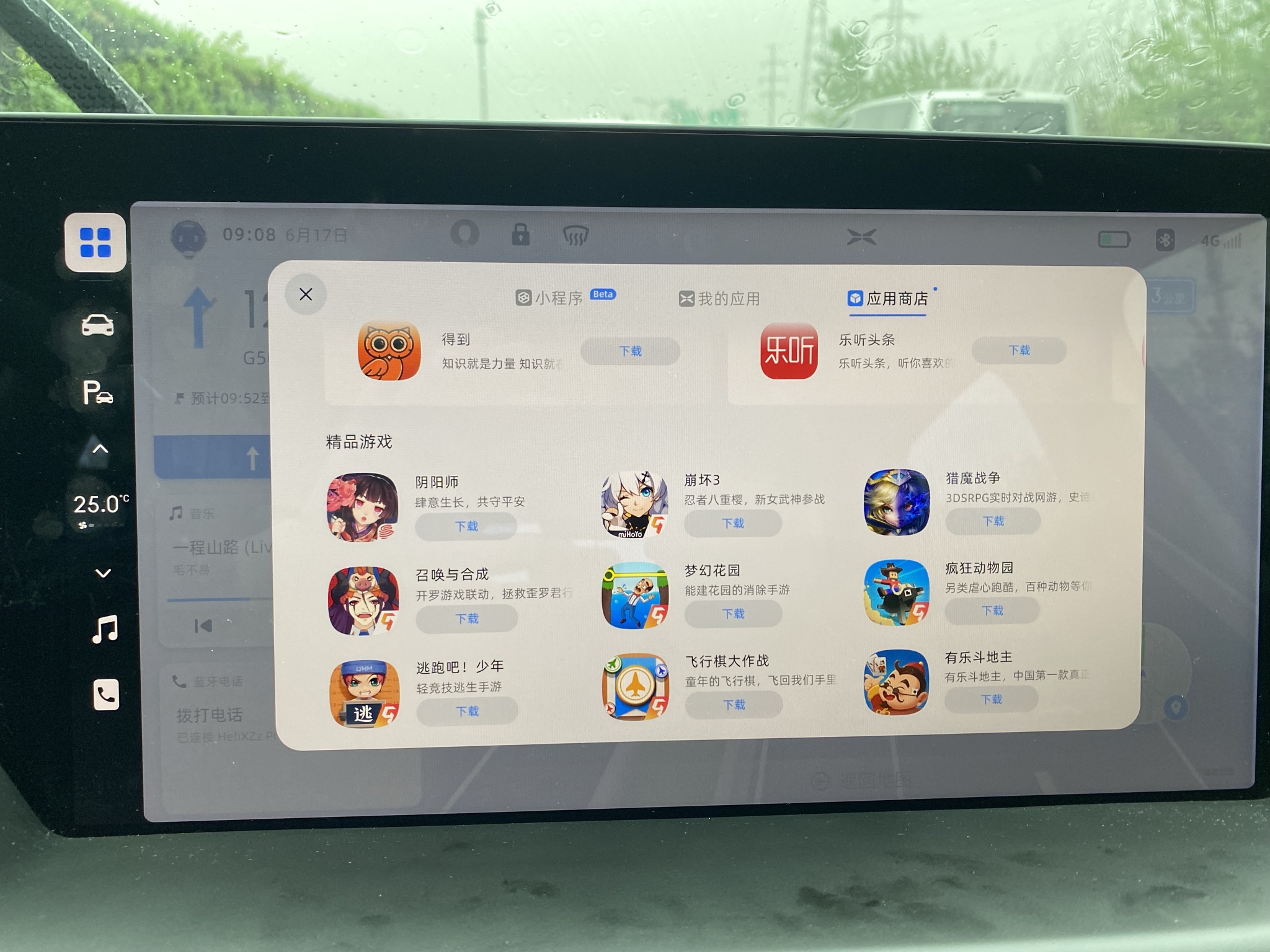
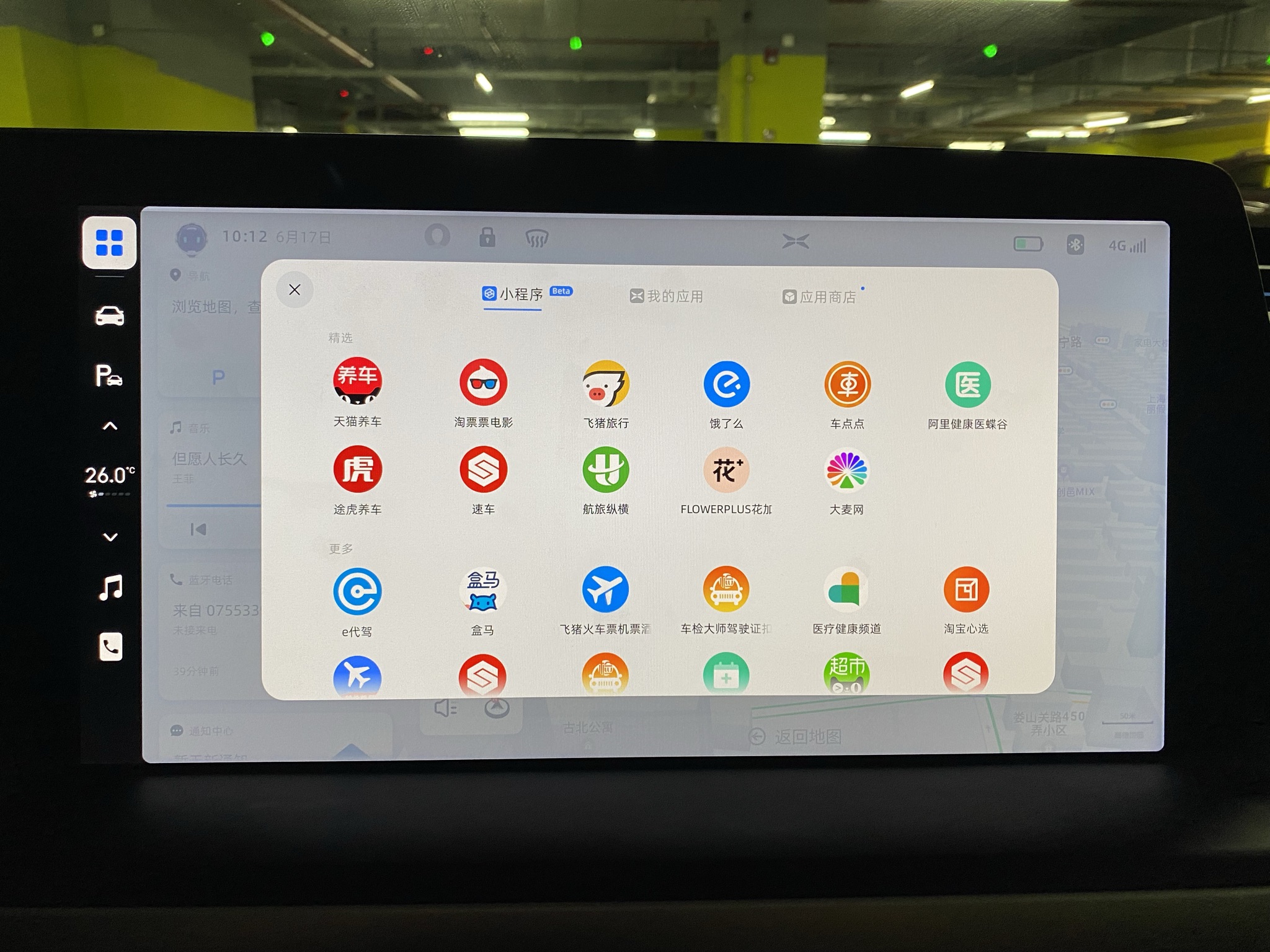
The car also has an application store, providing Netease Cloud Music and QQ Music in addition to the pre-installed KuGou Music, which is quite good. However, the applications are hardly adapted to the car’s UI and the functions are relatively simple.
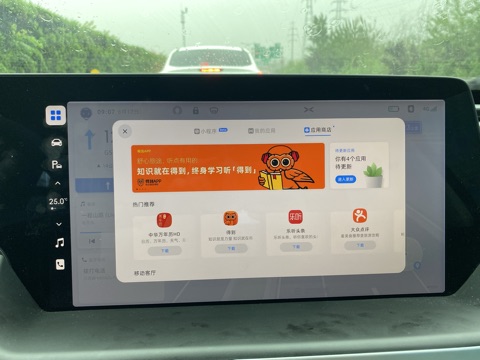
As for why Dianping, Damai, and Honkai Impact 3 are to be played on the car, I don’t know either.
Intelligent Assistance System: Not Without Highlights, But Also Shortcomings
Recently updated OTA, the Memory Parking feature is a very impressive function. I have been looking forward to experiencing it since I saw the video posted.
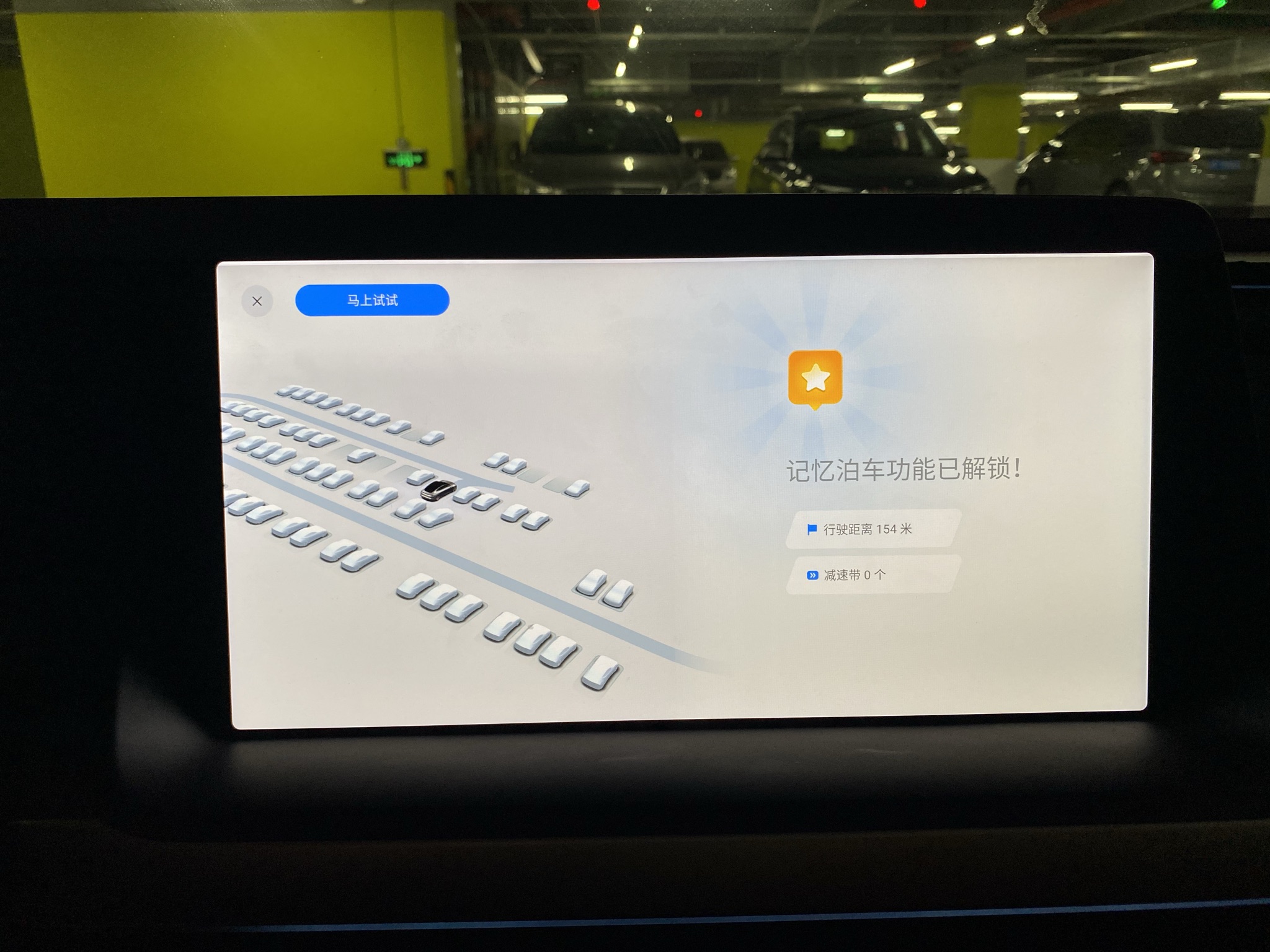
I tried the Memory Parking and Automatic Parking in the underground parking lot below the office building and the shopping mall, respectively. The result shows that the P7 has much stronger recognition ability and speed than my EC6, which is really commendable.
However, I still found several major limitations that make these functions more for showing off than practical use.- First of all, to use memory parking, you need to start recording the route when entering the parking lot. The interface for recording the route is very beautiful, accurately displaying the driving route, parking spaces passed along the way, and parked cars, which is surprising. But what if the parking space originally recorded is occupied? Or what if the original route changes due to construction, piles, and railings (which is not uncommon)? The driver still needs to focus, carefully judge the situation and be ready to intervene at any time. In addition, even fixed parking spaces in the garage are not necessarily easily available for the consumption group of 250,000 to 350,000 car models.
- Secondly, automatic parking is very sensitive to the identification of surrounding obstacles, but the speed is slow, there are still blind spots, and it is prone to interruption. When testing the automatic parking function in front of an office building, a car from the rear comes every ten seconds. The automatic parking will immediately stop. After trying several times and wasting too much time, obstructing others’ passage, it has to be canceled and manually reverse into the parking space.
In summary, whether it is automatic parking or memory parking, the perception is “if a person can park it, they can do it faster and better. If a person cannot park it, it cannot do it either.”
So what is the essence of memory parking?
I understand that it is actually to complete the mapping through the vehicle’s perception without original map data. This is an important part of gradually improving the assisted driving ability to achieve true automatic driving.
I am also looking forward to XPeng providing more assisted functions in subsequent scenarios and ultimately integrating these scenarios to provide real value.
For example, in narrow places (such as double-layer parking spaces), the driver can get off the car first, and the vehicle can automatically or semi-automatically park into the parking space; or when it rains, cars in the parking lot can automatically find the exit, scan code for payment, and come to the entrance to pick me up.
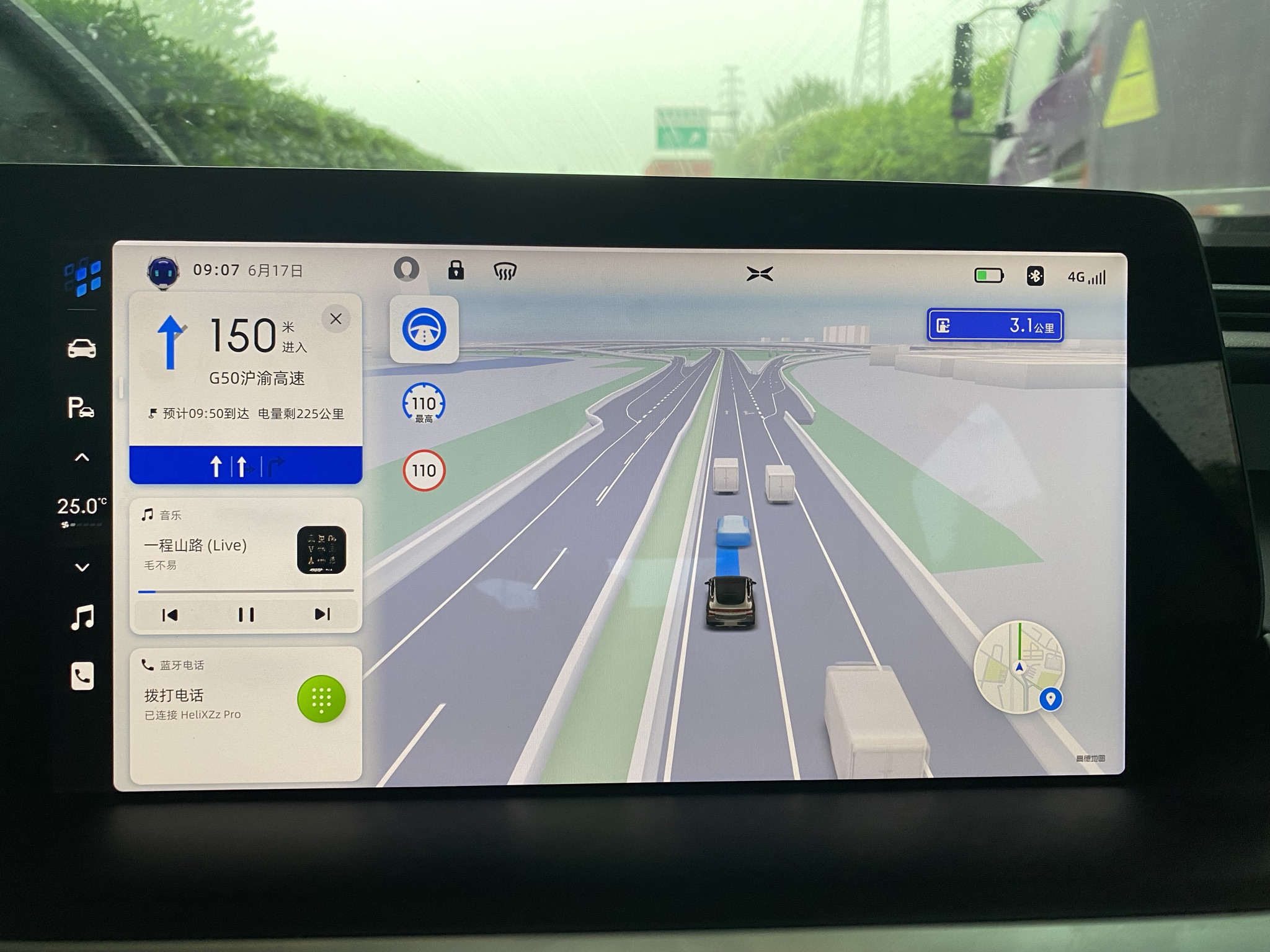
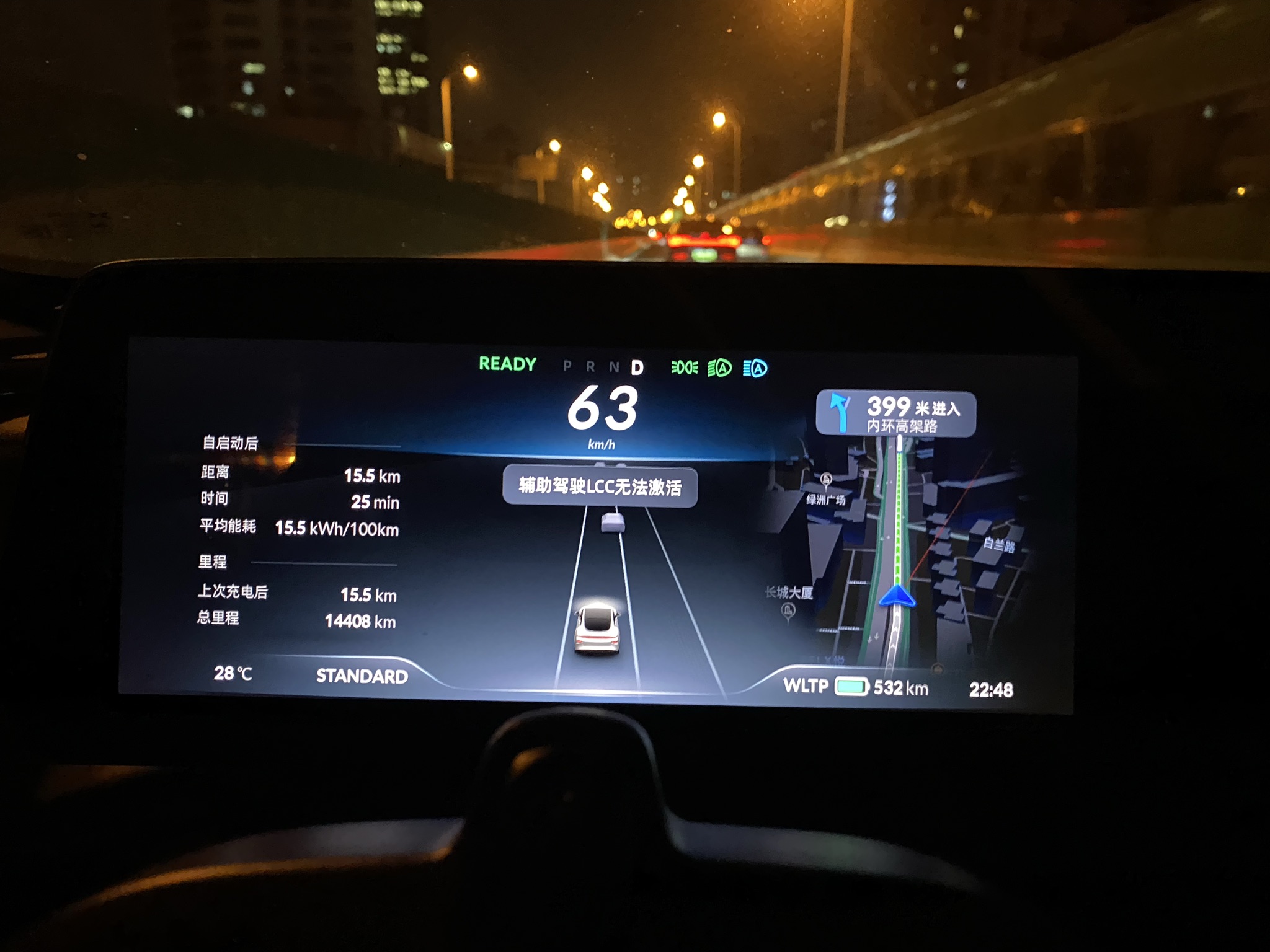
Besides, let’s talk about the experience of NGP.
Overall, XPeng’s NGP is much more aggressive in driving than NIO’s NOP, more like an “experienced driver.” Especially when there is a slow car ahead that affects the speed, NGP will actively change lanes and overtake, with higher passing efficiency on the highway than NOP. In the latest OTA update, there is also an option to flash high beams before automatic lane changing to remind front cars.
However, there are also some drawbacks. NGP has more “micro-manipulations” during cruising. For example, in the process of following the car, you can feel the car slightly accelerating and decelerating once or twice per second, with the movements a bit stiff, seemingly trying to precisely control the distance from the front car. In fact, the cruise we need does not require us to “tie” our car precisely to the front car. Having an appropriate space and allowing it to be briefly further away or closer does not matter, and both the driver and passengers will have a better riding experience.## As a mid-size coupe, how does it perform in other aspects?
As a coupe, trade-offs are inevitable. The Xpeng P7 prioritizes exterior design and driving performance, but sacrifices space and practicality.
For example, the trunk opening is small and the loading capacity is limited. The interior space utilization is not great. Compared to vehicles of similar size, the rear seats are not spacious and the legroom for the front passenger is limited.
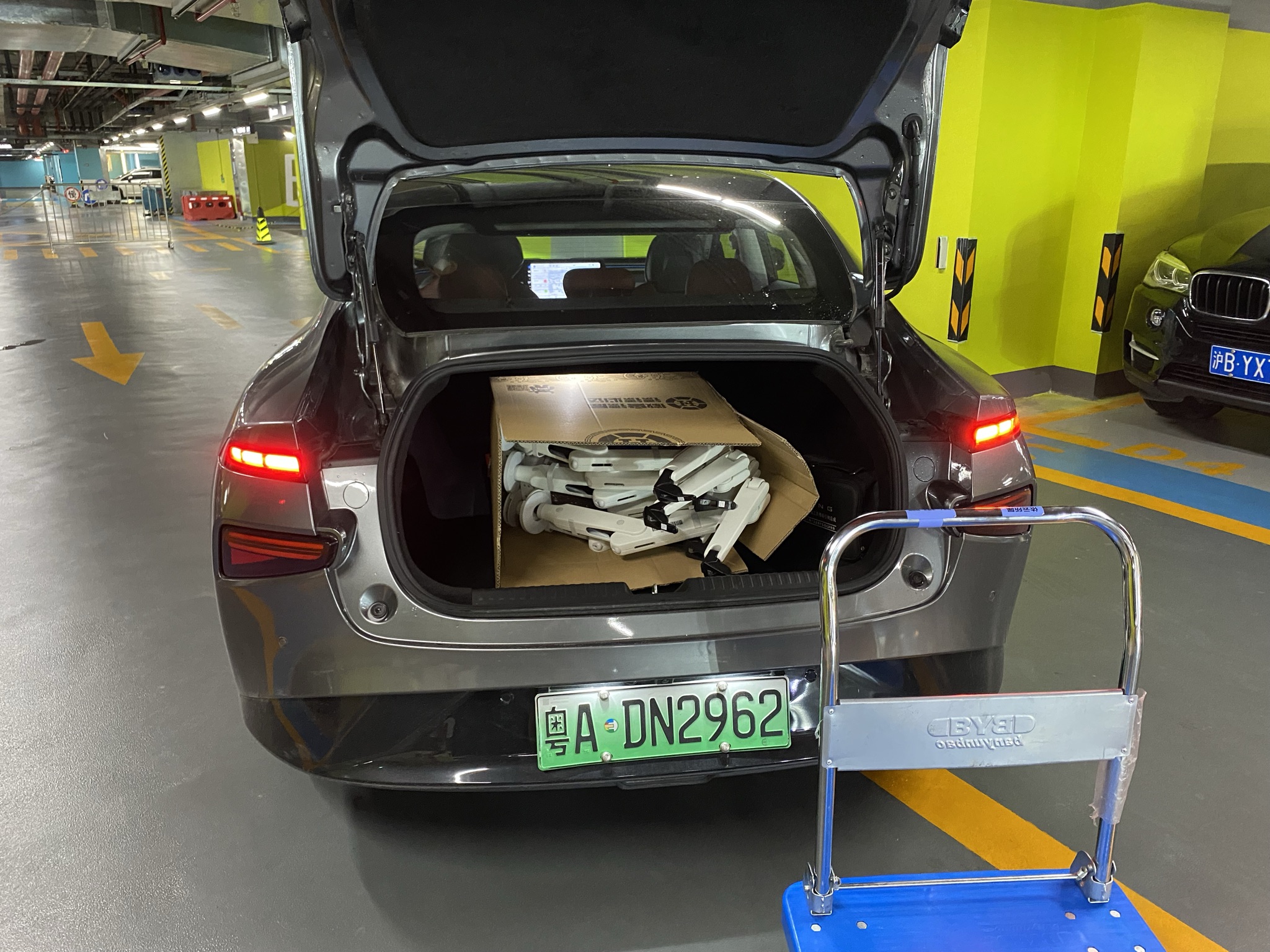
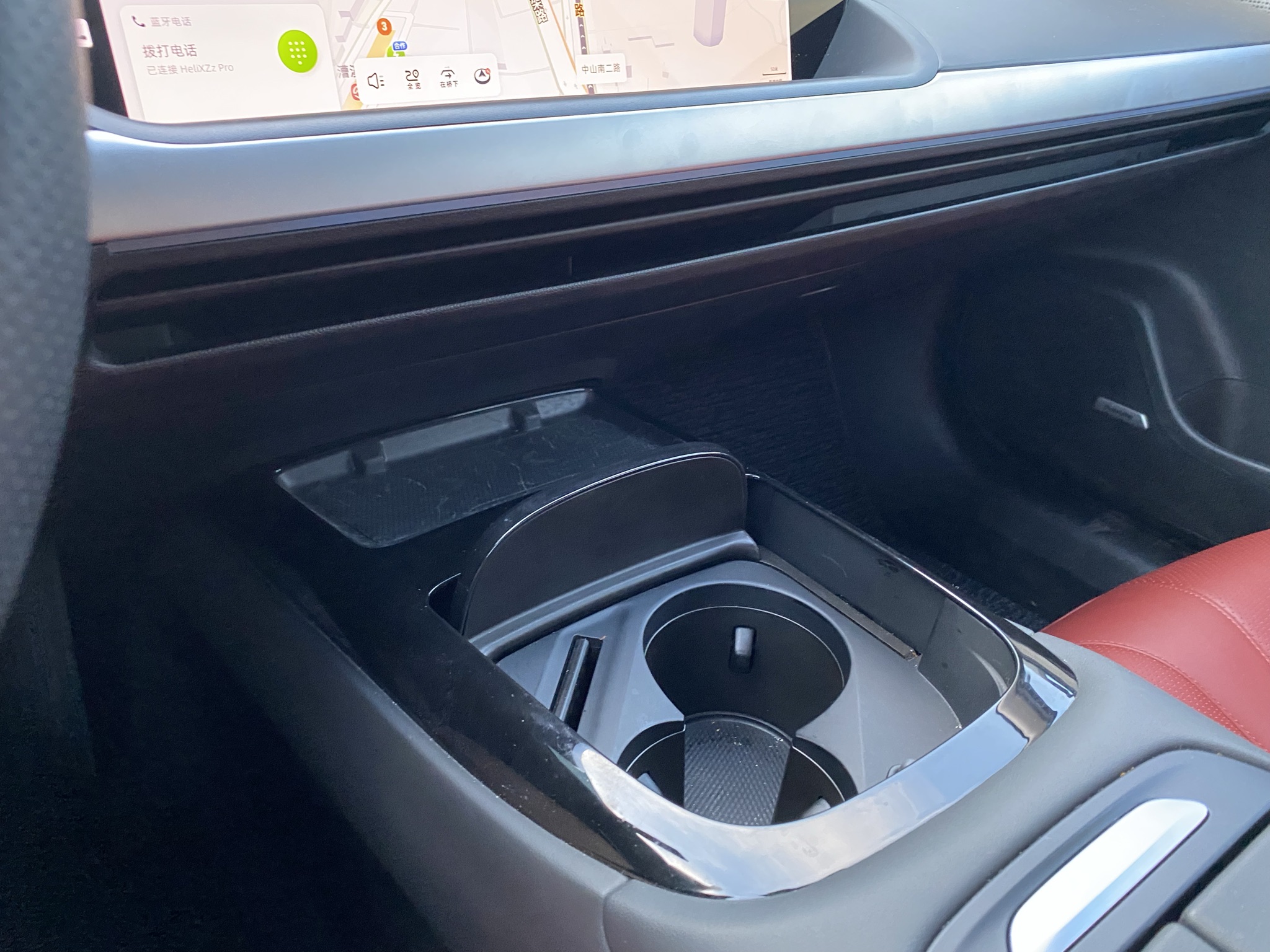
Additionally, there is still room for improvement in terms of the interior details’ quality and texture, especially for a car in the 250-350k RMB price range.
- The turning signal lever feels loose.
- The 3 and 9 o’clock buttons on the steering wheel are too large and feel cheap, making it difficult to operate and prone to misoperation.
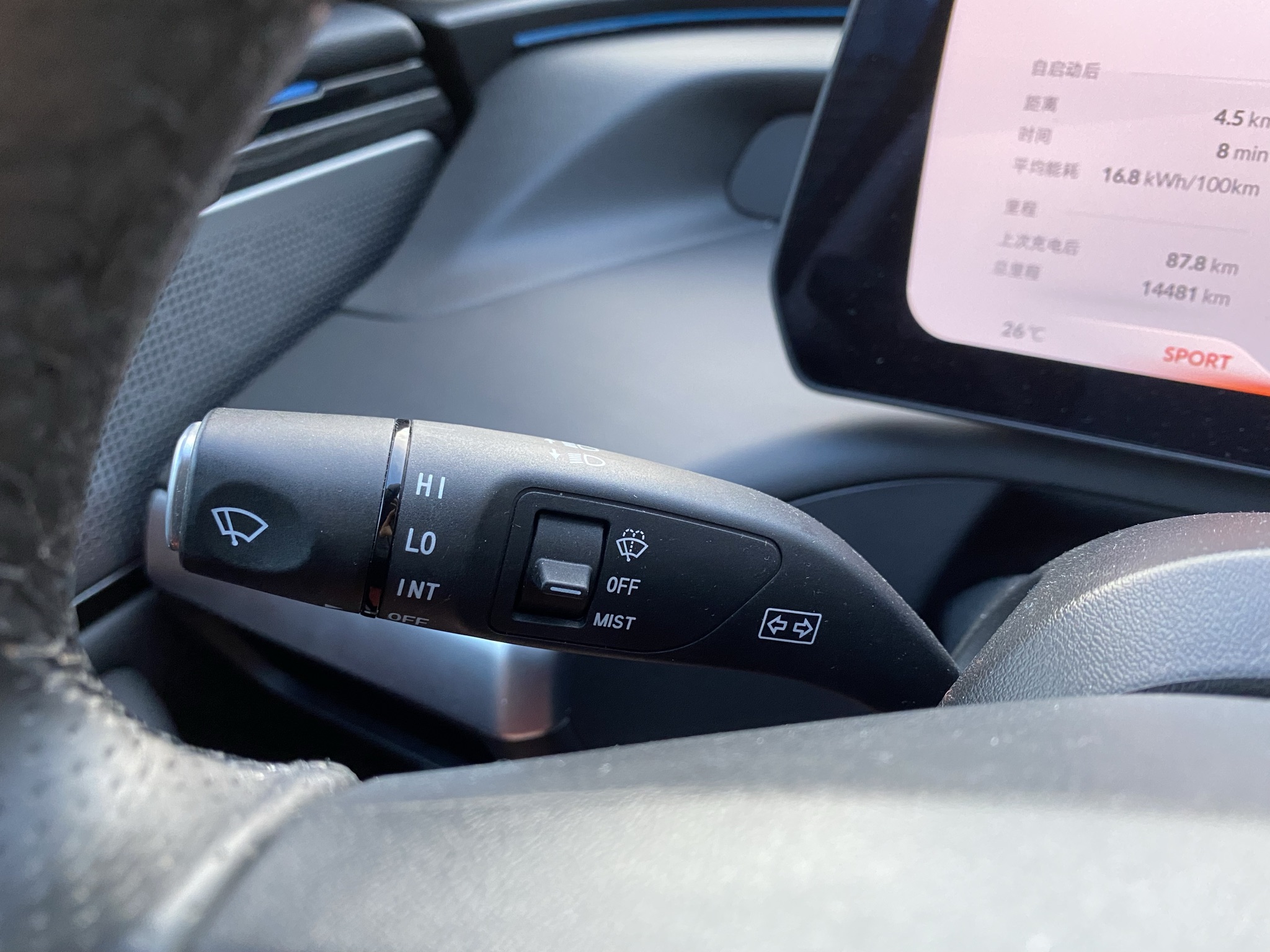
- The voice recognition system occasionally misunderstands homophones, making it difficult to navigate to the correct destination.
- The car does not have a physical or sensor button to open the trunk from the outside.
- The automatic wiper’s rain level judgement is poor.
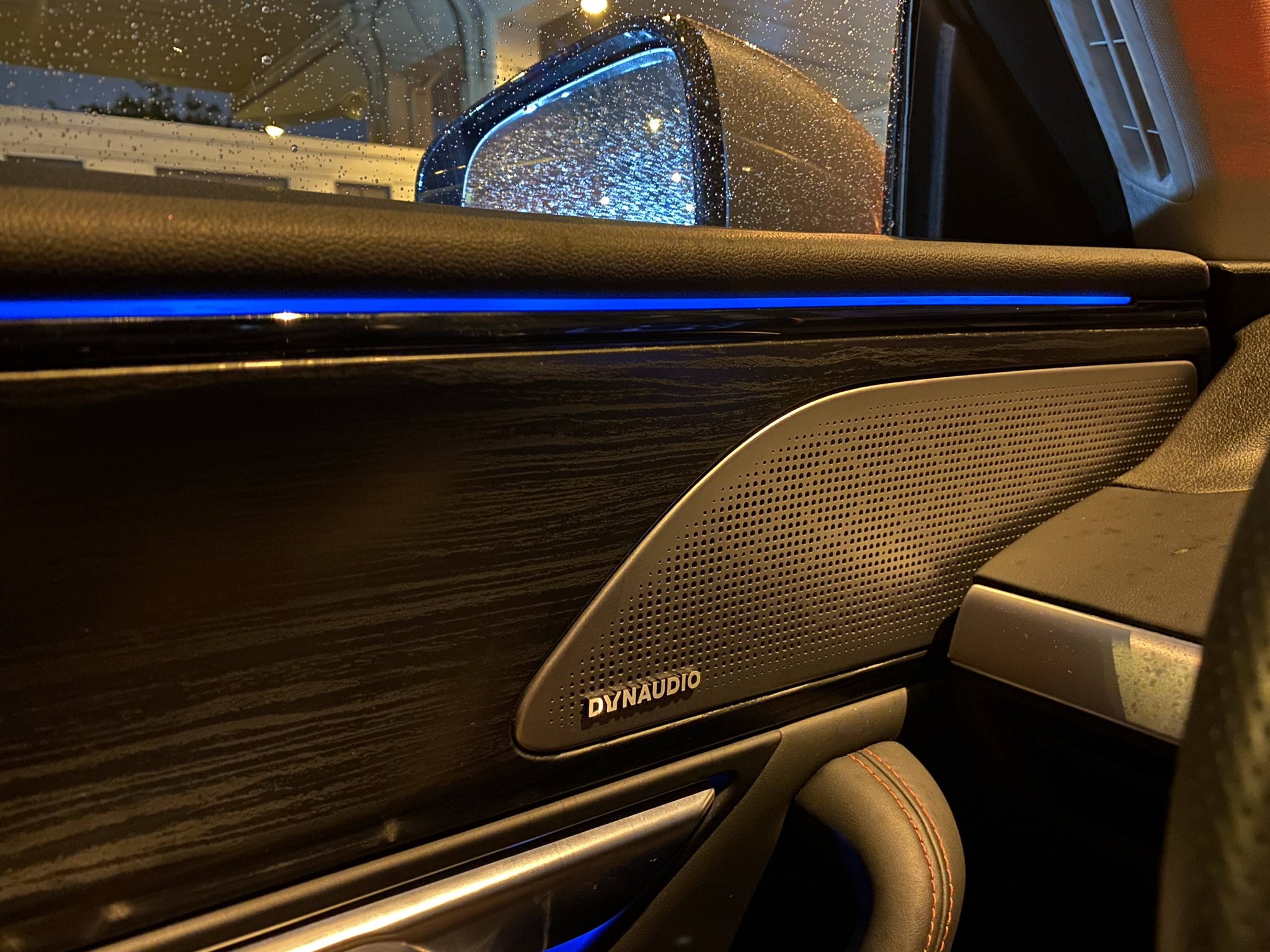
Despite these flaws, the P7 has many small features that impressed me greatly.
- The fast charging port is conveniently located on the rear fender.
- The car’s sound insulation and audio system are both good.
- The seat filling and softness are just right.
- The navigation voice is emitted from the driver’s headrest, not interfering with the passenger’s music.
- The car has a small turning radius, even though the sensation of the steering wheel hitting the limit is a little strange.
Conclusion
The P7 is a car with significant strengths and weaknesses that provide memorable driving pleasure and a good interactive experience, but also have tasteless design and various small flaws that make me hesitate to buy it.After a not-too-long-but-not-too-short experience, I posted a moment on my WeChat circle of friends. There was a description that said, “sometimes it’s like stinky tofu, smells bad but tastes good.”
This article is a translation by ChatGPT of a Chinese report from 42HOW. If you have any questions about it, please email bd@42how.com.
